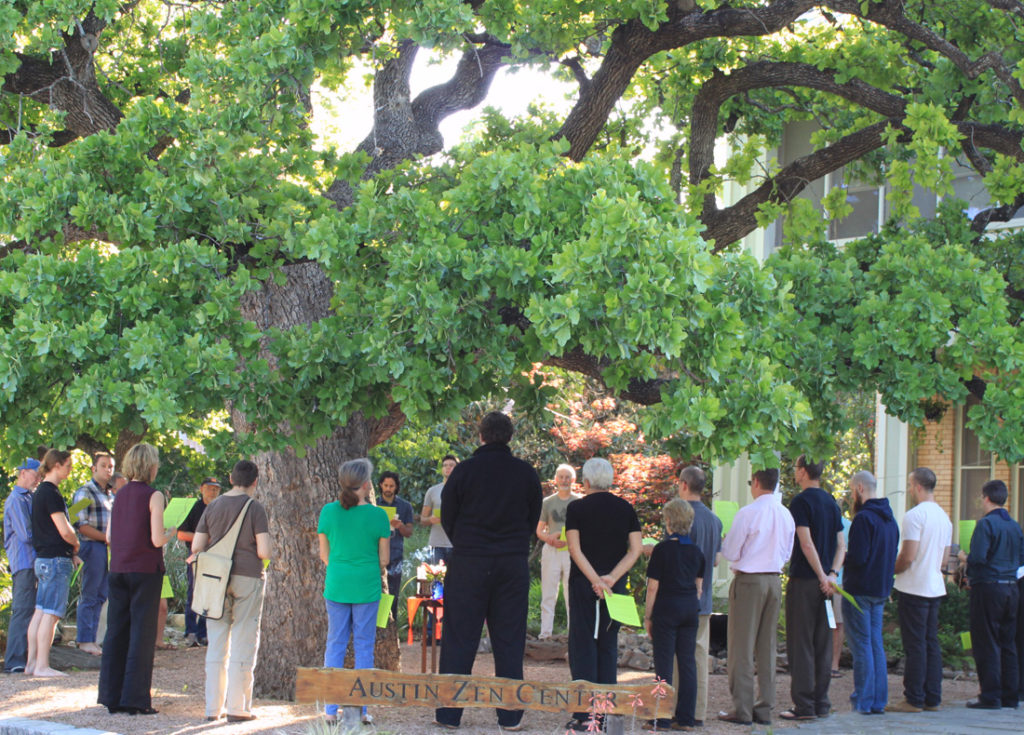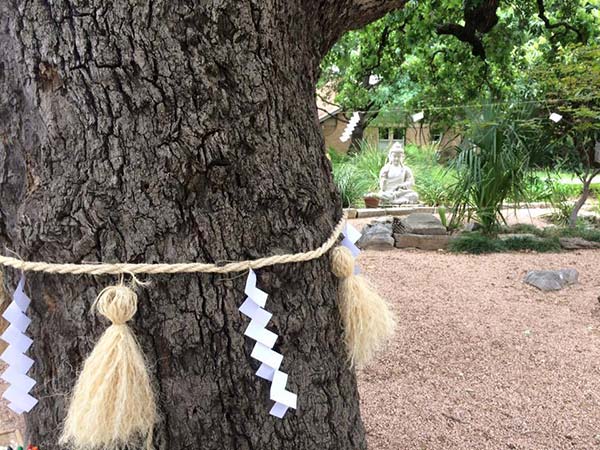- Saturday April 13, 2024 at 10:15am
Everyone is warmly invited to participate in our annual Earth Day celebration, scheduled this year during our Saturday public program. We will offer words of gratitude, intention, and vow to our Mother the Earth on paper ‘ema,’ (plaques) in-person or online. Blank plaques will be available in the week approaching Earth Day for your use. Please feel free to either submit an intention online below, or to stop by in-person (at the self-serve station at the base of the large post oak in the front yard of AZC) to write your wish or intention.
*** Pause to gather and purify body and mind before writing your intention, both physically and mentally. You can do this by washing or sanitizing your hands, centering your attention, and opening to the immensity of our interconnectedness with all being. ***

On Saturday April 13th at 10.15 we will hold our Earth Day ceremony in the front yard at AZC. Following a ritual purification of the space, and a statement by the Guiding Teacher, we will offer bows and incense, and chant an excerpt from Dogen Zenji’s Mountains and Rivers Sutra. During this time the ema will be ceremonially hung from the great post oak that welcomes us every day. The oak tree, which was symbolically ordained in 2014, embodies the immense activity and stillness that we are part of. Our natural world greatly needs our utmost respect, care, and stewardship.
The form of our Earth Day ceremony: The Austin Zen Center is a Soto Zen Buddhist temple with roots in Zen, which upon its arrival to Japan became heavily influenced and even interwoven with the dominant Japanese indigenous religion and culture of Shintoism: “the way of the kami.” Shinto is a system of prehistoric nature worship that imbued every mountain, every stream, and even rocks and trees with a spirit. These deities, known as kami, were considered cheerful and friendly to humans. If kept satisfied, they would watch over human affairs and refrain from causing natural disasters. Many Japanese people practice both Shintoism and Buddhism, and Shinto shrines are often found at Buddhist temples in Japan. The reverence and respect for nature is an integral part of our Zen practice, woven into our life of practice at a basic, almost primordial, level. On Earth Day we hail back to these ancient traditions of deep and sustaining respect, care, and stewardship of our planet Earth and the natural world, both as a manifestation of our Bodhisattva Vows and as acknowledgement of our mutual interconnectedness.

Shimenawa are lengths of laid rice straw or hemp rope used for ritual purification in Shinto. They are believed to act as a ward against evil spirits and are often set up at a ground-breaking ceremony before construction begins on a new building. They are found at Shinto shrines, torii gates, and sacred landmarks and can vary in diameter from a few centimetres to several metres, often festooned with rope tassels and zig-zag paper streamers called shide. A space bound by shimenawa indicates a sacred or pure space.
They are also used around yorishiro (objects capable of attracting spirits and being inhabited by them). Shimenawa ropes surround yorishiro to make their sacredness manifest. These notably include certain trees, in which case the inhabiting spirits are
called kodama, and cutting down these trees is thought to bring misfortune. In cases of stones, the stones are known as iwakura. Hanging white paper shide delineates a sacred space or object, and is an indication that spirits or gods are present.
